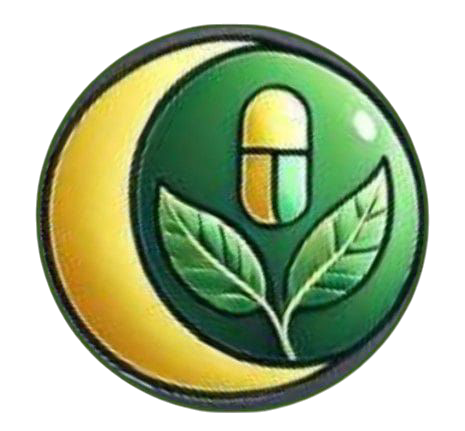Introduction to Plant-Based Medicines
Throughout history, humans have relied on plants for their medicinal properties. In fact, many of today’s most commonly used pharmaceuticals are derived from plants. With the rise of interest in natural health, plant-based drugs are gaining more recognition for their effectiveness and sustainability. From treating common ailments to combating serious diseases, plant-derived medicines continue to play a crucial role in modern healthcare.
In this article, we explore a list of notable drugs that come from plants, their health benefits, and how they have transformed the pharmaceutical industry.
Common Drugs Derived from Plants
|
Drug/Chemical |
Action |
Plant Source |
|
Acetyldigoxin |
Cardiotonic |
Digitalis lanata (Grecian foxglove, woolly foxglove) |
|
Adoniside |
Cardiotonic |
Adonis vernalis (pheasant's eye, red chamomile) |
|
Aescin |
Antiinflammatory |
Aesculus hippocastanum (horse chestnut) |
|
Aesculetin |
Antidysentery |
Frazinus rhychophylla |
|
Agrimophol |
Anthelmintic |
Agrimonia supatoria |
|
Ajmalicine |
Treatment for circulatory disorders |
Rauvolfia sepentina |
|
Allantoin |
Vulnerary |
Several plants |
|
Allyl isothiocyanate |
Rubefacient |
Brassica nigra (black mustard) |
|
Anabesine |
Skeletal muscle relaxant |
Anabasis sphylla |
|
Andrographolide |
Treatment for baccillary dysentery |
Andrographis paniculata |
|
Anisodamine |
Anticholinergic |
Anisodus tanguticus |
|
Anisodine |
Anticholinergic |
Anisodus tanguticus |
|
Arecoline |
Anthelmintic |
Areca catechu (betel nut palm) |
|
Asiaticoside |
Vulnerary |
Centella asiatica (gotu cola) |
|
Atropine |
Anticholinergic |
Atropa belladonna (deadly nightshade) |
|
Benzyl benzoate |
Scabicide |
Several plants |
|
Berberine |
Treatment for bacillary dysentery |
Berberis vulgaris (common barberry) |
|
Bergenin |
Antitussive |
Ardisia japonica (marlberry) |
|
Betulinic acid |
Anticancerous |
Betula alba (common birch) |
|
Borneol |
Antipyretic, analgesic, antiinflammatory |
Several plants |
|
Bromelain |
Antiinflammatory, proteolytic |
Ananas comosus (pineapple) |
|
CNS stimulant |
Camellia sinensis (tea, also coffee, cocoa and other plants) |
|
|
Camphor |
Rubefacient |
Cinnamomum camphora (camphor tree) |
|
Camptothecin |
Anticancerous |
Camptotheca acuminata |
|
(+)-Catechin |
Hemostatic |
Potentilla fragarioides |
|
Chymopapain |
Proteolytic, mucolytic |
Carica papaya (papaya) |
|
Cissampeline |
Skeletal muscle relaxant |
Cissampelos pareira (velvet leaf) |
|
Local anaesthetic |
Erythroxylum coca (coca plant) |
|
|
Codeine |
Analgesic, antitussive |
Papaver somniferum (poppy) |
|
Colchiceine amide |
Antitumor agent |
Colchicum autumnale (autumn crocus) |
|
Colchicine |
Antitumor, antigout |
Colchicum autumnale (autumn crocus) |
|
Convallatoxin |
Cardiotonic |
Convallaria majalis (lily-of-the-valley) |
|
Curcumin |
Choleretic |
Curcuma longa (turmeric) |
|
Cynarin |
Choleretic |
Cynara scolymus (artichoke) |
|
Danthron |
Laxative |
Cassia species |
|
Demecolcine |
Antitumor agent |
Colchicum autumnale (autumn crocus) |
|
Deserpidine |
Antihypertensive, tranquilizer |
Rauvolfia canescens |
|
Deslanoside |
Cardiotonic |
Digitalis lanata (Grecian foxglove, woolly foxglove) |
|
L-Dopa |
Anti-parkinsonism |
Mucuna species (nescafe, cowage, velvetbean) |
|
Digitalin |
Cardiotonic |
Digitalis purpurea (purple foxglove) |
|
Digitoxin |
Cardiotonic |
Digitalis purpurea (purple foxglove) |
|
Digoxin |
Cardiotonic |
Digitalis purpurea (purple or common foxglove) |
|
Emetine |
Amoebicide, emetic |
Cephaelis ipecacuanha |
|
Ephedrine |
Sympathomimetic, antihistamine |
Ephedra sinica (ephedra, ma huang) |
|
Etoposide |
Antitumor agent |
Podophyllum peltatum (mayapple) |
|
Galanthamine |
Cholinesterase inhibitor |
Lycoris squamigera (magic lily, resurrection lily, naked lady) |
|
Gitalin |
Cardiotonic |
Digitalis purpurea (purple or common foxglove) |
|
Glaucarubin |
Amoebicide |
Simarouba glauca (paradise tree) |
|
Glaucine |
Antitussive |
Glaucium flavum (yellow hornpoppy, horned poppy, sea poppy) |
|
Glasiovine |
Antidepressant |
Octea glaziovii |
|
Glycyrrhizin |
Sweetener, treatment for Addison's disease |
Glycyrrhiza glabra (licorice) |
|
Gossypol |
Male contraceptive |
Gossypium species (cotton) |
|
Hemsleyadin |
Treatment for bacillary dysentery |
Hemsleya amabilis |
|
Hesperidin |
Treatment for capillary fragility |
Citrus species (e.g., oranges) |
|
Hydrastine |
Hemostatic, astringent |
Hydrastis canadensis (goldenseal) |
|
Hyoscyamine |
Anticholinergic |
Hyoscyamus niger (black henbane, stinking nightshade, henpin) |
|
Irinotecan |
Anticancer, antitumor agent |
Camptotheca acuminata |
|
Kaibic acud |
Ascaricide |
Digenea simplex (wireweed) |
|
Kawain |
Tranquilizer |
Piper methysticum (kava kava) |
|
Kheltin |
Bronchodilator |
Ammi visaga |
|
Lanatosides A, B, C |
Cardiotonic |
Digitalis lanata (Grecian foxglove, woolly foxglove) |
|
Lapachol |
Anticancer, antitumor |
Tabebuia species (trumpet tree) |
|
a-Lobeline |
Smoking deterrant, respiratory stimulant |
Lobelia inflata (Indian tobacco) |
|
Menthol |
Rubefacient |
Mentha species (mint) |
|
Methyl salicylate |
Rubefacient |
Gaultheria procumbens (wintergreen) |
|
Monocrotaline |
Topical antitumor agent |
Crotalaria sessiliflora |
|
Morphine |
Analgesic |
Papaver somniferum (poppy) |
|
Neoandrographolide |
Treatment of dysentery |
Andrographis paniculata |
|
Nicotine |
Insecticide |
Nicotiana tabacum (tobacco) |
|
Nordihydroguaiaretic acid |
Antioxidant |
Larrea divaricata (creosote bush) |
|
Noscapine |
Antitussive |
Papaver somniferum (poppy) |
|
Ouabain |
Cardiotonic |
Strophanthus gratus (ouabain tree) |
|
Pachycarpine |
Oxytocic |
Sophora pschycarpa |
|
Palmatine |
Antipyretic, detoxicant |
Coptis japonica (Chinese goldenthread, goldthread, Huang-Lia) |
|
Papain |
Proteolytic, mucolytic |
Carica papaya (papaya) |
|
Papavarine |
Smooth muscle relaxant |
Papaver somniferum (opium poppy, common poppy) |
|
Phyllodulcin |
Sweetener |
Hydrangea macrophylla (bigleaf hydrangea, French hydrangea) |
|
Physostigmine |
Cholinesterase inhibitor |
Physostigma venenosum (Calabar bean) |
|
Picrotoxin |
Analeptic |
Anamirta cocculus (fish berry) |
|
Pilocarpine |
Parasympathomimetic |
Pilocarpus jaborandi (jaborandi, Indian hemp) |
|
Pinitol |
Expectorant |
Several plants (e.g., bougainvillea) |
|
Podophyllotoxin |
Antitumor, anticancer agent |
Podophyllum peltatum (mayapple) |
|
Protoveratrines A, B |
Antihypertensives |
Veratrum album (white false hellebore) |
|
Pseudoephredrine |
Sympathomimetic |
Ephedra sinica (ephedra, ma huang) |
|
nor-pseudoephedrine |
Sympathomimetic |
Ephedra sinica (ephedra, ma huang) |
|
Quinidine |
Antiarrhythmic |
Cinchona ledgeriana (quinine tree) |
|
Antimalarial, antipyretic |
Cinchona ledgeriana (quinine tree) |
|
|
Qulsqualic acid |
Anthelmintic |
Quisqualis indica (Rangoon creeper, drunken sailor) |
|
Rescinnamine |
Antihypertensive, tranquilizer |
Rauvolfia serpentina |
|
Reserpine |
Antihypertensive, tranquilizer |
Rauvolfia serpentina |
|
Rhomitoxin |
Antihypertensive, tranquilizer |
Rhododendron molle (rhododendron) |
|
Rorifone |
Antitussive |
Rorippa indica |
|
Rotenone |
Piscicide, Insecticide |
Lonchocarpus nicou |
|
Rotundine |
Analagesic, sedative, traquilizer |
Stephania sinica |
|
Rutin |
Treatment for capillary fragility |
Citrus species (e.g., orange, grapefruit) |
|
Salicin |
Analgesic |
Salix alba (white willow) |
|
Sanguinarine |
Dental plaque inhibitor |
Sanguinaria canadensis (bloodroot) |
|
Santonin |
Ascaricide |
Artemisia maritma (wormwood) |
|
Scillarin A |
Cardiotonic |
Urginea maritima (squill) |
|
Scopolamine |
Sedative |
Datura species (e.g., Jimsonweed) |
|
Sennosides A, B |
Laxative |
Cassia species (cinnamon) |
|
Silymarin |
Antihepatotoxic |
Silybum marianum (milk thistle) |
|
Sparteine |
Oxytocic |
Cytisus scoparius (scotch broom) |
|
Stevioside |
Sweetener |
Stevia rebaudiana (stevia) |
|
Strychnine |
CNS stimulant |
Strychnos nux-vomica (poison nut tree) |
|
Taxol |
Antitumor agent |
Taxus brevifolia (Pacific yew) |
|
Teniposide |
Antitumor agent |
Podophyllum peltatum (mayapple or mandrake) |
|
Tetrahydrocannabinol (THC) |
Antiemetic, decreases occular tension |
Cannabis sativa (marijuana) |
|
Tetrahydropalmatine |
Analgesic, sedative, tranquilizer |
Corydalis ambigua |
|
Tetrandrine |
Antihypertensive |
Stephania tetrandra |
|
Diuretic, vasodilator |
Theobroma cacao (cocoa) |
|
|
Theophylline |
Diuretic, bronchodilator |
Theobroma cacao and others (cocoa, tea) |
|
Thymol |
Topical antifungal |
Thymus vulgaris (thyme) |
|
Topotecan |
Antitumor, anticancer agent |
Camptotheca acuminata |
|
Trichosanthin |
Abortifacient |
Trichosanthes kirilowii (snake gourd) |
|
Tubocurarine |
Skeletal muscle relaxant |
Chondodendron tomentosum (curare vine) |
|
Valapotriates |
Sedative |
Valeriana officinalis (valerian) |
|
Vasicine |
Cerebral stimulant |
Vinca minor (periwinkle) |
|
Vinblastine |
Antitumor, Antileukemic agent |
Catharanthus roseus (Madagascar periwinkle) |
|
Vincristine |
Antitumor, Antileukemic agent |
Catharanthus roseus (Madagascar periwinkle) |
|
Yohimbine |
Aphrodisiac |
Pausinystalia yohimbe (yohimbe) |
|
Yuanhuacine |
Abortifacient |
Daphne genkwa (lilac) |
|
Yuanhuadine |
Abortifacient |
Daphne genkwa (lilac) |
Consult wisely so you will become better informed and fully appreciate the critically important role that plant medicines play in health and culture.
Benefits of Plant-Derived Drugs
Plant-based drugs offer a range of advantages, making them a valuable resource for modern medicine. Some key benefits include:
Natural Healing Properties: Many plants contain potent compounds that have been used for centuries to treat ailments. These natural substances can be gentler on the body compared to synthetic chemicals.
Fewer Side Effects: Although not free from side effects, plant-based drugs are often associated with fewer and less severe adverse reactions compared to their synthetic counterparts.
Sustainability: As global awareness of environmental sustainability grows, plant-based drugs are becoming more desirable. They offer an eco-friendly alternative to pharmaceuticals that rely on synthetic processes or animal testing.
Cultural Significance: Many plants have long been integral to traditional medicine systems, offering remedies passed down through generations. Their continued use highlights the importance of preserving plant knowledge.
The Future of Plant-Derived Pharmaceuticals
The future of plant-derived pharmaceuticals looks promising. As our understanding of plant biology and chemistry deepens, we are likely to see even more plant-based drugs reach the market. Advances in biotechnology, including plant cloning and synthetic biology, may also provide more sustainable ways to produce plant-based compounds.
Additionally, growing public interest in natural and holistic medicine is driving the demand for plant-based alternatives to synthetic pharmaceuticals. This trend is expected to continue as people seek out natural remedies and more sustainable treatment options.
The Future of Plant-Derived Pharmaceuticals
The future of plant-derived pharmaceuticals looks promising. As our understanding of plant biology and chemistry deepens, we are likely to see even more plant-based drugs reach the market. Advances in biotechnology, including plant cloning and synthetic biology, may also provide more sustainable ways to produce plant-based compounds.
Additionally, growing public interest in natural and holistic medicine is driving the demand for plant-based alternatives to synthetic pharmaceuticals. This trend is expected to continue as people seek out natural remedies and more sustainable treatment options.
Conclusion: Harnessing Nature for Health
Plant-based drugs have been a cornerstone of medicine for centuries, and they continue to be essential in modern healthcare. From pain relief to cancer treatment, the medicinal properties of plants have shaped the development of pharmaceuticals and are poised to play an even greater role in the future.
By exploring the diverse list of plant-derived drugs, we gain a deeper understanding of the natural world and its potential to improve human health. As we continue to harness the healing power of plants, we can look forward to new, effective treatments that benefit both people and the planet.
OTHER BREAKTHROUGH CURES AT NEEM CLINIC


